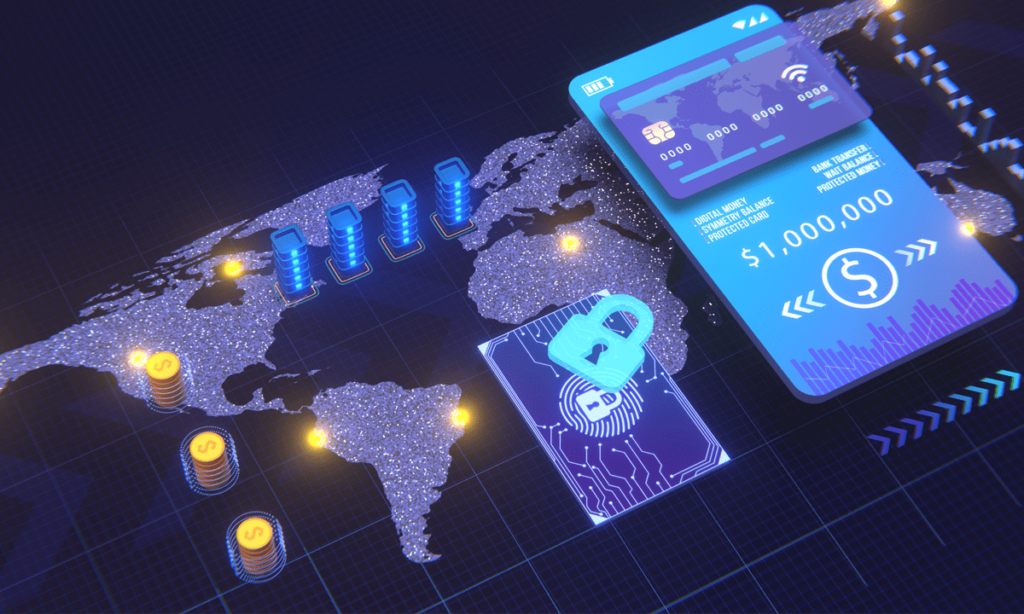
TerraPay Expanding Its Payments Infrastructure to Make Money Move Easily
by Johanan Devanesan May 30, 2023Digitalisation has made the world smaller and far more interconnected, and the traditional barriers of time, distance, and geography are eroding, paving the way for a truly globalised society.
This transformation is especially evident in the realm of commerce, where modern businesses are no longer confined to their local markets but instead operate in an expansive, borderless digital economy.
Consequently, seamless cross-border payments have shifted from being a mere convenience to an outright necessity. They enable companies to tap into a more diverse customer base, forge international partnerships, access global supply chains, and expand their operations beyond their home territories.
For consumers, this evolution is no less significant. The need for smooth international payments extends beyond online shopping – it’s vital for families sending remittances, students studying abroad, and digital nomads working in various locations around the globe. As such, the demand for borderless cross-border payments underpins a new era of personal and professional connectivity, creating a more inclusive and accessible global economy.
The business problem of borderless payments
TerraPay, a UK-based payments infrastructure provider that believes every payment, small or large, deserves a secure and seamless journey. Cross-border commerce has been consistently expanding, primarily driven by developing markets. It is projected that by 2025, cross-border trade will be valued at US$8 trillion.
Yet despite this growth and the increasing prevalence of digital payments worldwide, borderless business payments remain a thorny issue, particularly for small and medium-sized enterprises (SMEs). These firms frequently grapple with complications in money transfers, which often involve delays, elevated costs, inconsistencies, and inefficiency.
How does TerraPay’s payment infrastructure address this?
“Product optimisation has a key role to play in overcoming the gap in the borderless payments infrastructure,”
says Akbar Hussain, TerraPay Co-founder as well as its Chief Legal and Compliance Officer.
“Furthermore, our state-of-the-art interoperable system has become a benchmark solution over the years – a single API integration connects partners to all current and future growth corridors and enables long-standing partnerships, supporting diverse payment instruments and types while adhering to complex regulations and compliance standards in different markets.”
TerraPay and an inclusive global financial ecosystem
TerraPay has also been an advocate of financial inclusion – driven to achieve the 2030 Agenda for Sustainable Development goal set out by the UN of reducing remittance costs and mobile wallet cross-border payments – by providing cost-effective money transfer services to partners in send markets, thereby reducing the global average of remittance costs from 7% to 3% in some key markets.
Akbar believes that TerraPay’s registered, regulated presence in over 26 global markets and global partnerships with financial institutions, merchants and e-payments services is “creating a more expansive and inclusive global financial ecosystem.”
“Over the years, we have collaborated with some of the most reputed banks and financial providers globally – Moneygram, Orange Money, Network International, LuLu Exchange, and NPCI to name a few,”
he explains.
“With over 121 bank partnerships, we have access to a far-reaching network of 4.5 billion-plus bank accounts, 1.5 billion-plus mobile wallets, across 100-plus receive countries and 202 send countries, TerraPay enables its partners to become beacons of the promise of global financial inclusion.”
Boarding the global payments highway with a single integration
With an eye toward empowering global financial inclusion, TerraPay’s plans go beyond mere payment processing.
“Furthermore, we are building a global payments highway to enable customers and businesses worldwide with transparent, real-time, uninterrupted, and secure global payment processing,”
says Akbar.
“We have established ourselves as a leading global partner to banks, mobile wallets, money transfer operators, merchants, and financial institutions, creating a global payments ecosystem that supports a range of diverse payment types and instruments,”
he went on.
“With a single integration, we connect our partners to this deep-rooted global network, backed by strong compliance and security standards.”
In 2022, TerraPay established more significant partnerships with leading banks, merchants and companies to further expand its footprint across the globe. To fuel its ambitions, the company raised US$9.6 million from Prime Ventures, IFC, and Partech in March 2020.
And in a recent Series B equity financing round led by IFC and supported by Prime Ventures, Partech Africa, and a consortium of other investors, in excess of US$100 million in equity and debt financing was raised.
As for 2023, TerraPay has set several key targets.
“One of our top priorities is to expand our global network, with a particular focus on the LATAM and MENA regions,”
affirms Akbar.
Additionally, the company is committed to strengthening its existing pay-out network and aims to achieve a presence in 150 countries by 2024. To support and accelerate this growth, the company plans to invest in marketing initiatives and the adoption of alternate payment methods, such as Request-to-Pay.
“This interoperable mobile wallet solution is expected to play a significant role in driving TerraPay’s expansion plans and improving its customers’ overall experience. By prioritising these goals, we hope to position ourselves as a leading player in the global payments industry and continue to deliver value to our stakeholders,”
says Akbar.
Tackling the risk of globalised payments infrastructure
With a vision of democratising the infrastructure of global payments, Chief Legal and Compliance Officer Akbar states that in order to ensure compliance with strict local and international regulations on cross-border payments, TerraPay needs “to ensure that all transactions, regardless of ticket size, are accorded the same gold standards of transparency, compliance and speed. To do this, at scale, we have developed a proprietary blend of global best practices, combined with jurisdiction-specific tailoring.”
How does TerraPay handle the risks associated with more cost-effective, cross-border transactions?
“We began from the premise that low ticket size cross-border transactions were ill-served by the existing infrastructure. This was, at least in part, because these high volume/low ticket size transactions (of which remittances are emblematic) were deemed higher risk, and also difficult to drive unit economics from,”
elaborates Akbar.
TerraPay harnesses technology and analytics to keep itself ahead in this sensitive area.
“So we tackled these two issues – the former by ensuring that we had a reliable data payload accompanying each transaction, such that we can (with data and machine learning) develop detailed models and transacting patterns. This allows us to contain the risks traditionally associated with the industry,”
Akbar concludes.
“As to the latter, our goal was always to compete on quality of service.”








